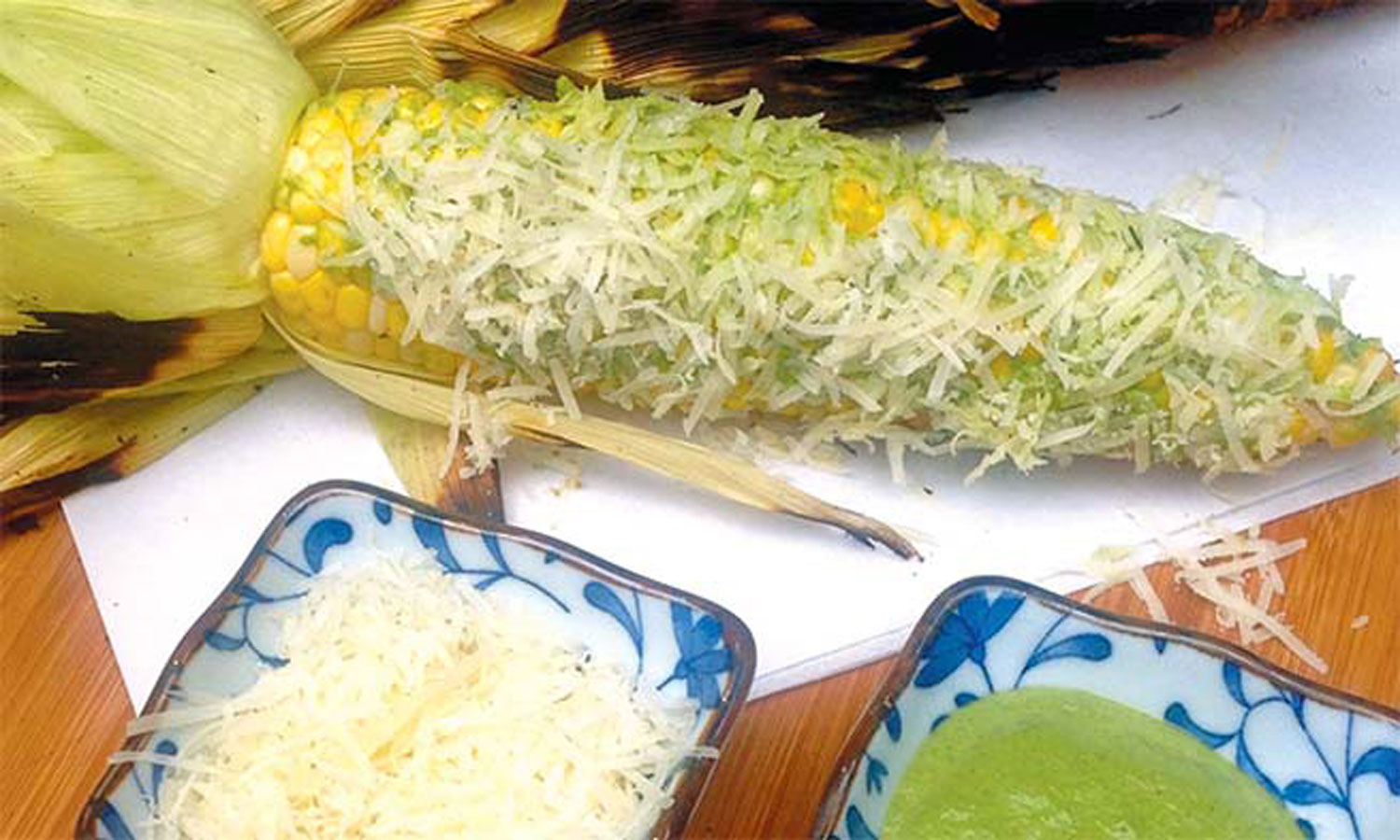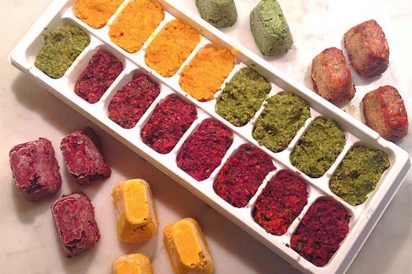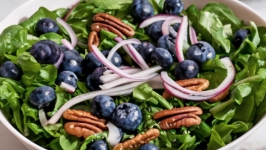Presto! It's Pesto
Pesto is the perfect summer condiment. It’s colorful, made with fresh summer produce and a snap to prepare. And the best part? You don’t have to heat up your kitchen on a hot August day to make it.
A LITTLE PESTO HISTORY
When thinking of pesto, the first thing that comes to mind is one word: basil.
Known as the “royal herb” by ancient Greeks, these tender yet bold-flavored green leaves hold the key to the creamy pesto most of us have tossed into our favorite warm pasta. Pesto experts don’t use just any basil but rather a particularly sweet and fl avorful variety called basilica Genovese or Genovese basil.
The use of this herb makes perfect culinary sense when you learn that pesto originated in the Liguria region of northern Italy. Its name is actually derived from the city of its origin, Genoa. In Genoese the word pesta means to pound or to crush. Since pesto was originally prepared by smashing the ingredients into a pulp with a mortar and pestle, the name aptly fit the dish.
Classic pesto is prepared with fresh Genovese basil leaves, garlic, pine nuts, Parmesan cheese and extra-virgin olive oil. A slightly different version of pesto exists in the Provence of France where it is known as pistou. The French version usually consists of just olive oil, basil and garlic.
Modern inventions have made pesto preparation less labor intensive though some pesto purists remain, painstakingly creating their creamy green concoction by hand. A food processor or high-speed blender takes the place of the mortar and pestle, creating a quicker yet just as delicious pesto product.
VARIATIONS ON A GREEN THEME
Although it may be tempting to keep with the green version of pesto we all know and love, summer is the perfect time of year to expand your pesto color wheel. There is a garden full of other colorful vegetables and herbs just waiting to be ground and bruised to create a variety of pesto renditions.
Try carrot pesto or beet pesto this summer. Or how about a sun-dried tomato pesto? Put them all together and you have a rainbow of colors and flavors. Make one a week, eat some now and store the rest to pull out on cold snowy day in February. The taste of summer pesto will brighten even the dreariest winter day.
CARROT TOP PESTO – A “USE IT ALL” RECIPE
In our world of waste not-want not, any recipe that uses every part of a vegetable is a favorite in my book. Carrot top pesto fits the bill perfectly. The vibrant orange carrot flesh brings a bright hue to the finished pesto. The addition of the feathery carrot tops adds another layer of flavor to this tasty spread.
The best carrots to use are the smaller tender carrots , the ones with feathery tops attached that grace your local summer farmer’s market or if you’re lucky, your home garden. After a quick wash and dry the carrots are ready to be transformed. Don’t worry about keeping the carrot skins on as long as you have given them a nice scrub.
Carrot pesto is extremely versatile. Whisk in a little olive oil to create a quick dressing for cooked grains like quinoa or farro. Use it straight up as a spread on crackers or as a dip with additional oven-roasted carrots or other favorite seasonal vegetables.
“Although it may be tempting to keep with the green version of pesto we all know and love, summer is the perfect time of year to expand your pesto color wheel.”
THINK RED
Red pesto you say? Beets make a perfect pesto and with interesting names like Merlin, Red Ace and Chioggia they also serve as a conversation starter.
Ironically, it was the beet greens that were originally consumed. The rosy beetroot was often used for medicinal purposes. Ever think of the origins of the phrase “red as a beet?” The rosy-colored juice was used as dye and as a beauty product to stain lips and color cheeks.
The sweet red beetroot that we know today wasn’t cultivated as a food until the 1500’s. Napoleon is credited for bringing the root main stream by declaring that beets be used as a primary source of sugar after the British restricted access to sugar cane.
Unlike carrot pesto, beet pesto needs a little jump start in the oven. Drizzle clean, skin-on beets with olive oil and encase in a loose foil package. Remember to place them on a baking sheet in case some of the beet juice attempts an escape.
The cooked, cooled and peeled beets are pureed in a food processor along with olive oil, cheese, garlic and, of course, a little more extra-virgin olive oil.
Try the rosy-colored pesto as a spread on flatbread with some locally- made chevre and some fresh whole sage leaves. Although premade flatbread can be used, take an extra half hour and make some yeast-free flatbread. The recipe provided stays moist with the addition of Greek yogurt and requires no rise.
TOMATOES GET THEIR TURN
Juicy tomatoes are perfect for eating right out of the garden. For making pesto, not so great. Sundried tomatoes or homemade oven-roasted tomatoes make a fast and flavorful pesto spread.
For a fast appetizer, cut premade raw puff pastry, available at most grocery stores, into squares.
Top with a generous dollop of sundried tomato pesto, a slice of one of those fresh garden tomatoes and a sprinkle of shredded mozzarella.
Bake in a 375-degree oven for 12 to 14 minutes, top with some fresh basil and you have a fast summer appetizer.
USING PESTO IN COOKING
Pesto has a very concentrated flavor so a little goes a long way. It’s best when added at the end of the recipe’s preparation. Some herbs tend to darken when cooked. By adding pesto last, the full flavor and color of pesto is retained.
If using in pasta, retain a 1/2 cup of the cooking water. Return the hot pasta to the cooking pan, then add enough water and pesto to your taste. The water and starch from the pasta will create a delicious, fast and easy sauce for any pasta.
Fresh vegetables can be given an extra kick with the addition of a few tablespoons of pesto. Roasted ears of corn become even more flavorful when basted with pesto before grilling. Just brush the ears with your favorite pesto and grill. No extra butter needed.
Put the barbeque sauce away and use pesto as a basting sauce for grilled chicken, pork or even fish. Salmon especially lends itself to the addition of a brush of herb-flavored pesto.
STORING PESTO
Store pesto in a jar or airtight container in the refrigerator for up to one week. Pressing a piece of plastic wrap on top of the pesto will help keep the pesto from discoloring.
Pesto can also be frozen for use throughout the year. What better way to create a quick winter meal than to pull out some of that fresh pesto you whipped up several months earlier?
One of the easiest ways to freeze pesto is to portion it in an ice cube tray. Freeze the pesto into cubes then pop them out and store in a heavy-duty freezer bag. The pesto will thaw quickly at room temperature or you can give it a little extra help by placing it in the microwave for 20 seconds.
Whether you spread it on a sandwich, toss it with your favorite pasta or treat yourself to a spoonful for a quick taste of summer, nothing captures the fresh flavors of the season like pesto.
RECIPES










